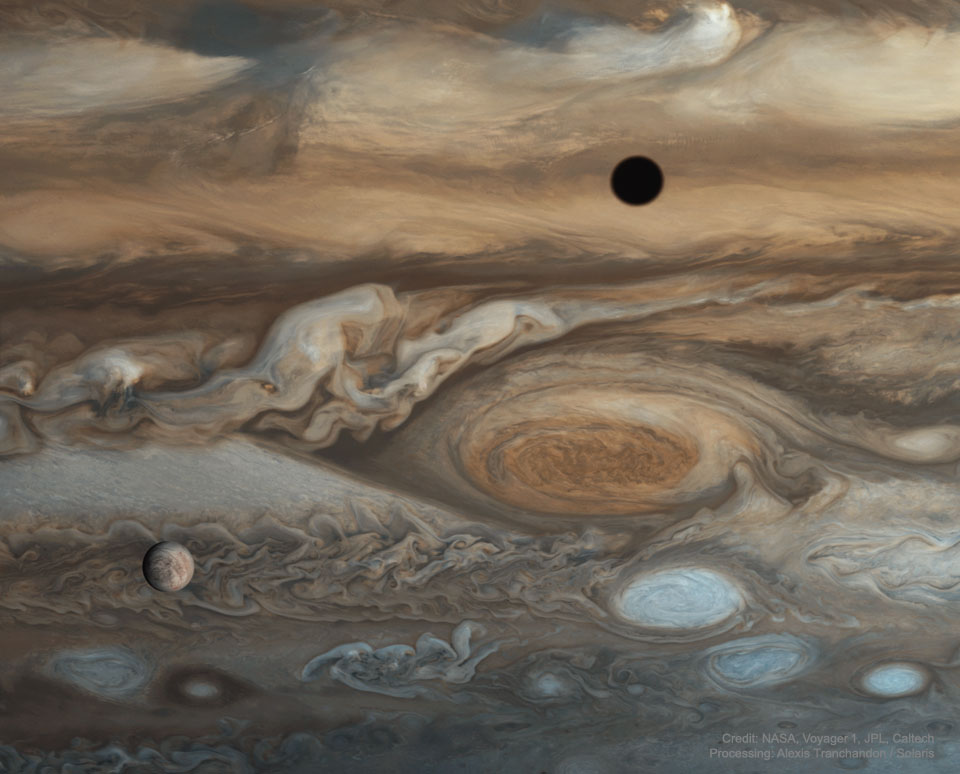旅行者1号拍摄的木卫二和木星
(原标题: Europa and Jupiter from Voyager 1)
2022-07-17
浏览次数: 420
木星上的那些斑点是什么?图中最大、最远的是大红斑,这是一个巨大的风暴系统,可能自357年前乔瓦尼·卡西尼(Giovanni Cassini)发现它以来,它就一直在木星上肆虐。目前还不知道为什么这个大斑点是红色的。左下方是木星最大的卫星之一:木卫二。1979年旅行者号传回的图像支持了现代的假设,即木卫二有地下海洋,因此是寻找外星生命的好地方。但是右上方的黑点呢?这是木星另一颗大卫星木卫一的影子。旅行者1号发现木卫一上的火山非常多,以至于没有发现撞击坑。旅行者1号在1979年飞越木星时拍摄的16张照片最近经过重新处理和合并,形成了这张特色图片。45年前的这个9月,旅行者1号从地球发射,开始了对太阳系有史以来最伟大的探索之一。免费下载:航海家海报
查看原文解释
What are those spots on Jupiter? Largest and furthest, just right of center, is the Great Red Spot -- a huge storm system that has been raging on Jupiter possibly since Giovanni Cassini's likely notation of it 357 years ago. It is not yet known why this Great Spot is red. The spot toward the lower left is one of Jupiter's largest moons: Europa. Images from Voyager in 1979 bolster the modern hypothesis that Europa has an underground ocean and is therefore a good place to look for extraterrestrial life. But what about the dark spot on the upper right? That is a shadow of another of Jupiter's large moons: Io. Voyager 1 discovered Io to be so volcanic that no impact craters could be found. Sixteen frames from Voyager 1's flyby of Jupiter in 1979 were recently reprocessed and merged to create the featured image. Forty-five years ago this September, Voyager 1 launched from Earth and started one of the greatest explorations of the Solar System ever. Free Download: Voyager Posters
